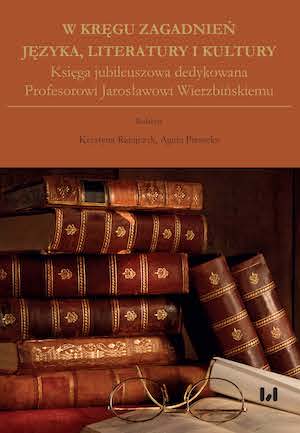Польский и русский языки в многоязычном словаре Ванвина (Vanwyn). “The polyglot, a collection of many Languages, nine thousand in general, or more customary words in ten mother tongues or idioms with Russian and Polish”
Polish and Russian in Vanwyn’s Multilingual Dictionary, “The Polyglot a Collection of Many Languages, Nine Thousand in General, or More Customary Words in Ten Mother Tongues or Idioms with Russian and Polish”
Author(s): Elena Nevzorova-Kmech
Subject(s): Language studies, Theoretical Linguistics, Applied Linguistics
Published by: Wydawnictwo Uniwersytetu Łódzkiego
Keywords: multilingual dictionaries; 19th century lexicography; Vanvin; Polish language; Russian language
Summary/Abstract: The article is a general description of one of the multilingual dictionaries of the 19th century. The recent trend in lexicography has had a long tradition. Vanwin’s Polyglot is a little-known dictionary, but we find references to it in bibliographic reference books, one of which was compiled by the Polish linguist and bibliographer Karol Estreicher (he paid attention to this work while working on the book “Szwargot więzienny”, but did not use it due to lack of access to the edition). Vanvin’s multilingual dictionary reflects the transitional stage of the lexicography at the end of the 18th century and the middle of the 19th century and partly shows the state of national languages and the development of linguistic thought.The dictionary was published in Belgium in 1841. He waited for re-releases in other countries. Now we can find this work in the library catalogs of different countries with the title in French and in English. The full name contains basic information: eight languages and Polish-Russian idioms, nine thousand words, target user (secular person), scope (everyday use in life needs, trade, travel, law, army, navigation, hotel business).The article is a general description of one of the multilingual dictionaries of the 19th century. The recent trend in lexicography has had a long tradition. Vanwin’s “Polyglot” is a little-known dictionary, but we find references to it in bibliographic reference books, one of which was compiled by the Polish linguist and bibliographer Karol Estreicher (he paid attention to this work while working on the book “Szwargot więzienny”, but he did not use because he was not able to access the edition). Vanvin’s multilingual dictionary reflects the transitional stage of lexicography at the end of the 18th century and the mid-19th century and partly highlights the status of national languages and the development of linguistic thought.The dictionary was published in Belgium in 1841. It was also released in other countries. Today, the work can be found in the library catalogues of different countries with the title in French and English. The full name already provided some basic information: eight languages and Polish-Russian idioms, nine thousand words, target user (secular person), scope (everyday use in life needs, trade, travel, law, army, navigation, hotel business).The distribution of linguistic material in the dictionary follows the ideographic principle. Vocabulary organisation in sections is alphabetical (on the basis of the French alphabet). Our attention was given to the Polish and Russian parts. To cover these two Slavic languages, the author studied the works of E. I. Oldekop, V. N. Tatishchev, O. Kopczyńsky. By the form of transliteration of entries, as well as by comparing the meanings of words and phrases, it is clear that the author experienced obvious difficulties with the Russian part. His “mistakes” are valuable for us because they allow the restoration of the etymology of, for example, jargons.In addition, this lexicographic work furnishes country-specific cultural information. Similar dictionaries can only serve as additional sources for the study of interlingual relations.
- Page Range: 193-202
- Page Count: 10
- Publication Year: 2022
- Language: Russian
- Content File-PDF

